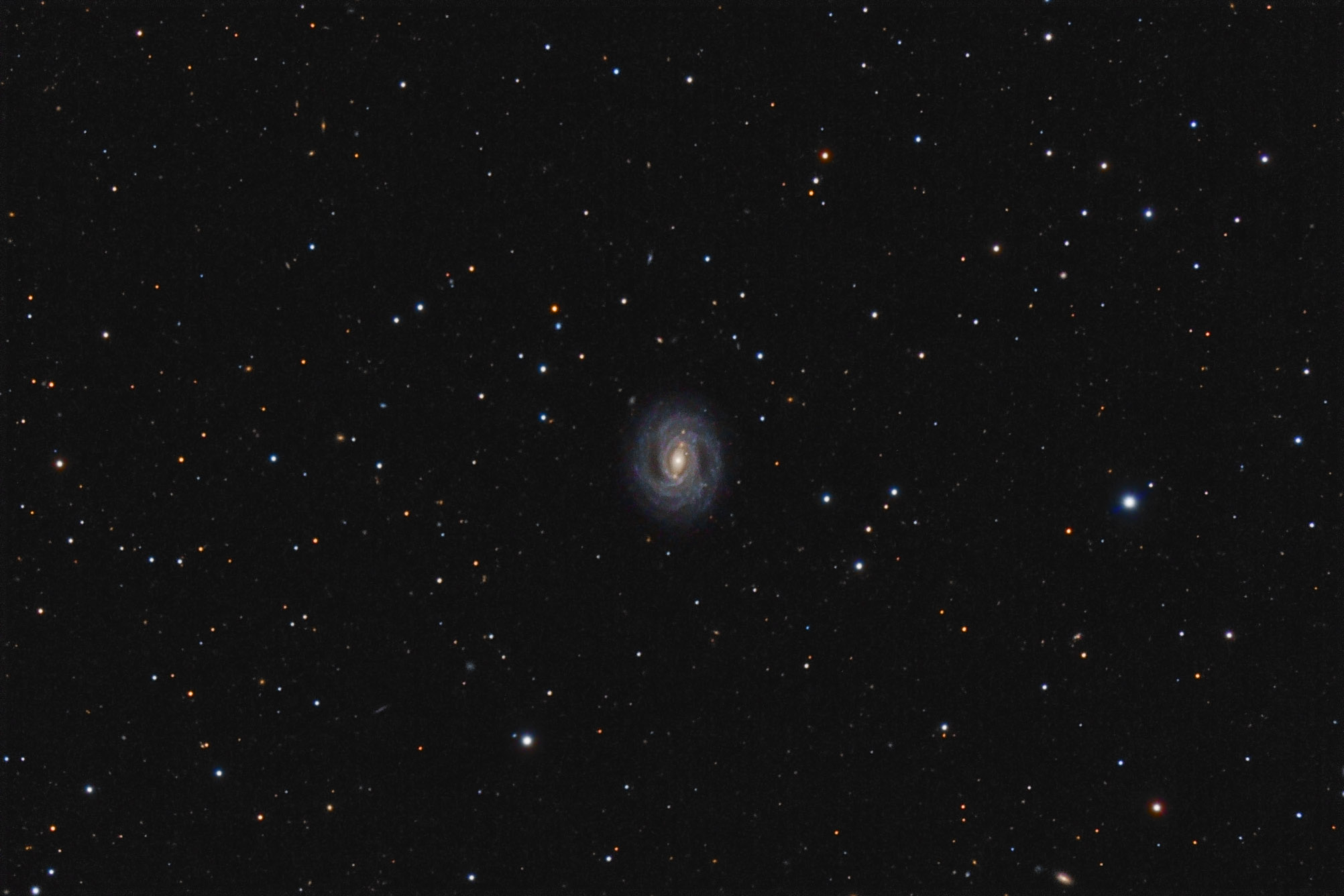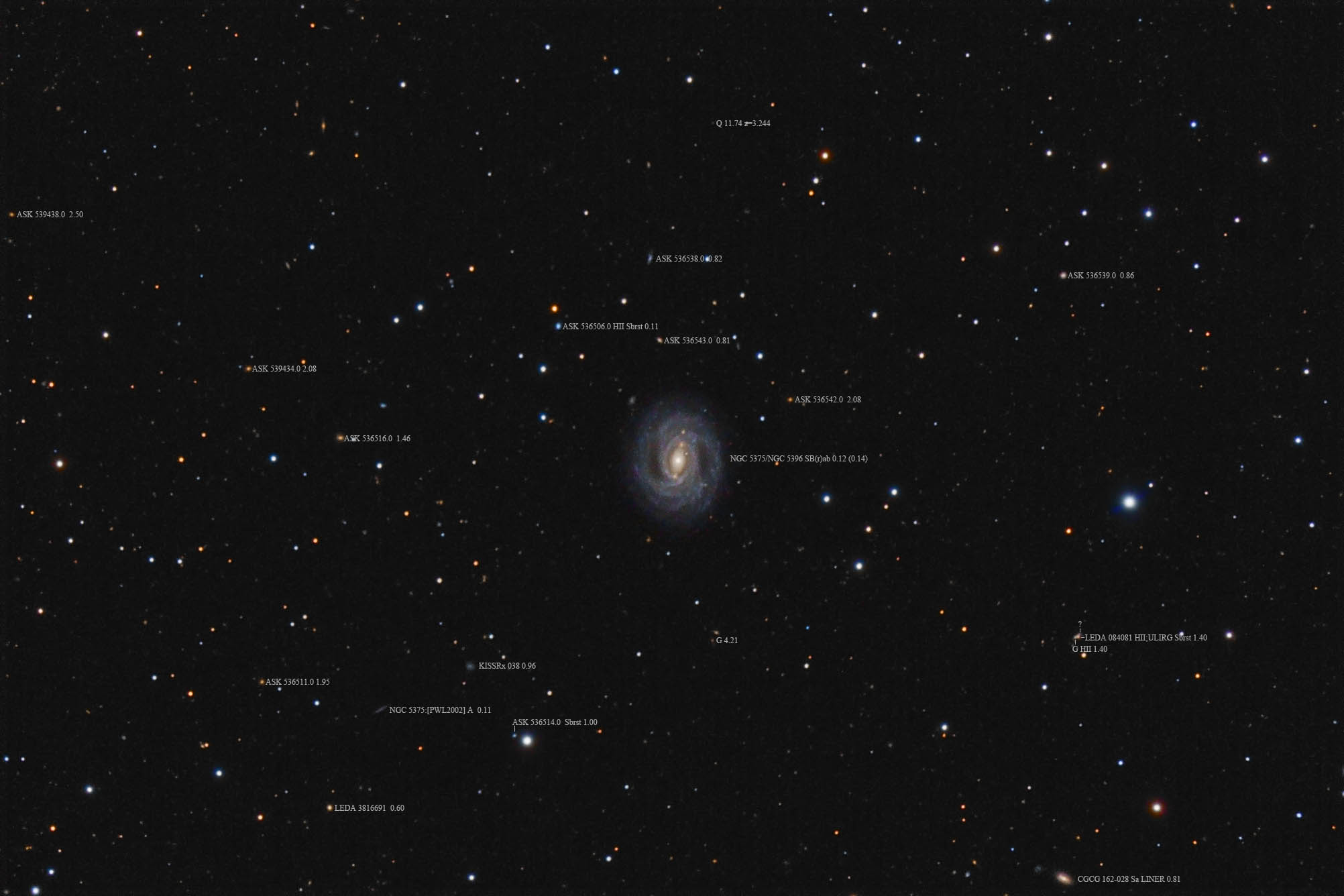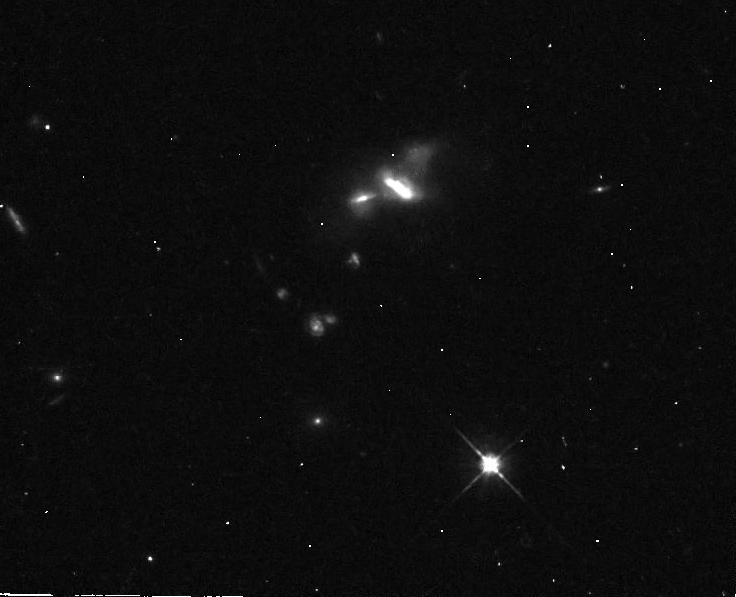| Description | Images |
Object name: NGC5375Designation(s): NGC5375, NGC 5375/5396 is a very large spiral galaxy in southeastern Canes Venatici about 120 million light-years distant and about 120,000 light-years across. NED classifies it as SB(r)ab while the NGC project says SBb. The galaxy was probably discovered by William Herschel on May 16, 1784 and entered into the GC by John Herschel at the position William Hershel provided. But not finding anything at that position John decided it was the same as his discovery on May 15, 1830 which he entered separately in the GC. Dreyer then followed suit doing the same with the NGC so it now has two listings. NGC 5396 is likely the preferred listing since it is the one with the correct position. I started doing dual entries in numerical order and am sticking with that for consistency. It appears to have two companions one to the northeast and another to the southeast. At least they have very similar redshifts. They are about 10,000 and 20,000 light-years across. While the one to the northeast has starburst activity it doesn't seem this is related to any interaction with NGC 5375. Neither seems perturbed. It's not in either of the H400 programs. Related Designation(s):2MASS J13565599+2909515, 2MASX J13565598+2909514, 2MIG 1919, ASK 536544.0, CGCG 1354.5+2925, CGCG 162-035, IRAS F13546+2924, KIG 0605, KIG 0605:[VOV2007] 043, KUG 1354+294, MCG +05-33-027, NGC 5375, NGC 5396, NGC5375, NSA 094217, PGC 049604, SDSS J135655.99+290951.7, SDSS J135656.00+290951.7, SIP 0849-1, UGC 08865, UZC J135656.0+290952, [WTK2001] J135655.91+290953.0 , |


